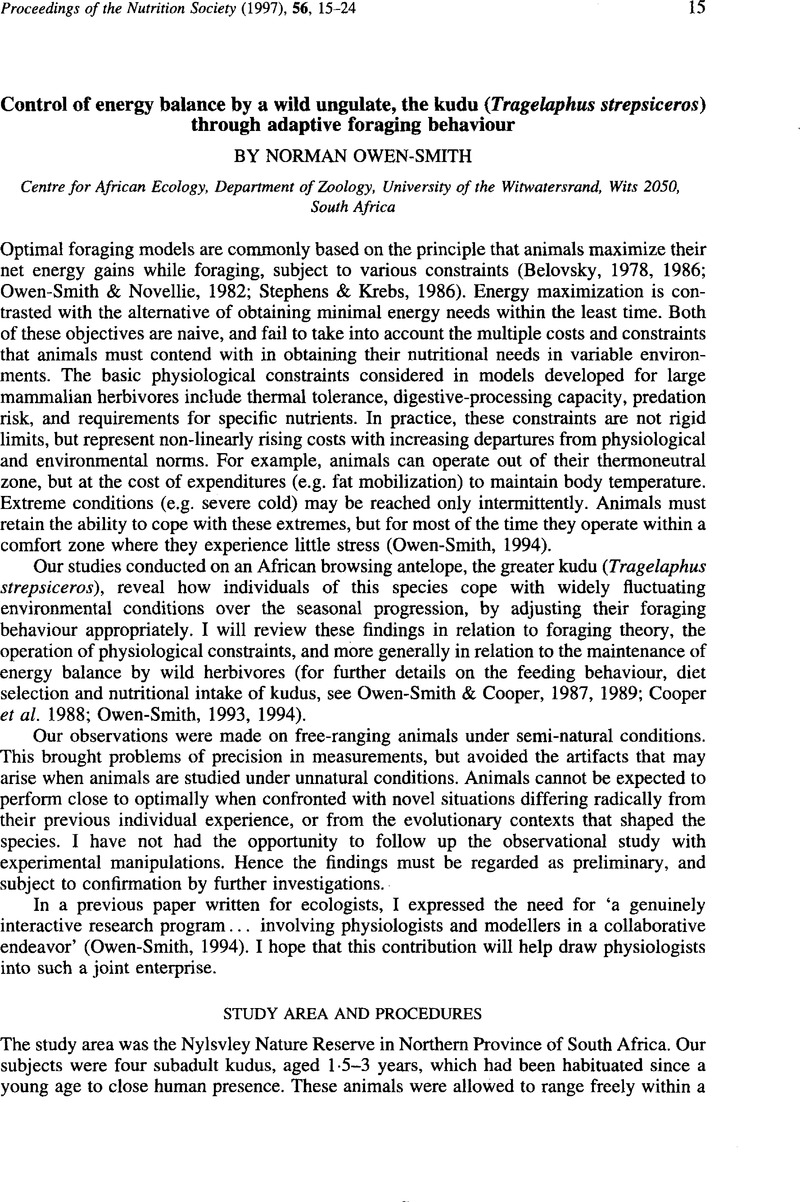Crossref Citations
This article has been cited by the following publications. This list is generated based on data provided by Crossref.
Bergman, C. M.
Fryxell, J. M.
and
Gates, C. C.
2000.
The effect of tissue complexity and sward height on the functional response of Wood Bison.
Functional Ecology,
Vol. 14,
Issue. 1,
p.
61.
Owen-Smith, R. Norman
2002.
Adaptive Herbivore Ecology.
Searle, Kate R.
and
Shipley, Lisa A.
2008.
The Ecology of Browsing and Grazing.
Vol. 195,
Issue. ,
p.
117.
Naumann, Harley D.
Cooper, Caitlyn E.
and
Muir, James P.
2017.
Seasonality affects leaf nutrient and condensed tannin concentration in southern African savannah browse.
African Journal of Ecology,
Vol. 55,
Issue. 2,
p.
168.
Hunninck, L
Jackson, C R
May, R
Røskaft, E
Palme, R
Sheriff, M J
and
Cooke, Steven
2020.
Triiodothyronine (T3) levels fluctuate in response to ambient temperature rather than nutritional status in a wild tropical ungulate.
Conservation Physiology,
Vol. 8,
Issue. 1,



